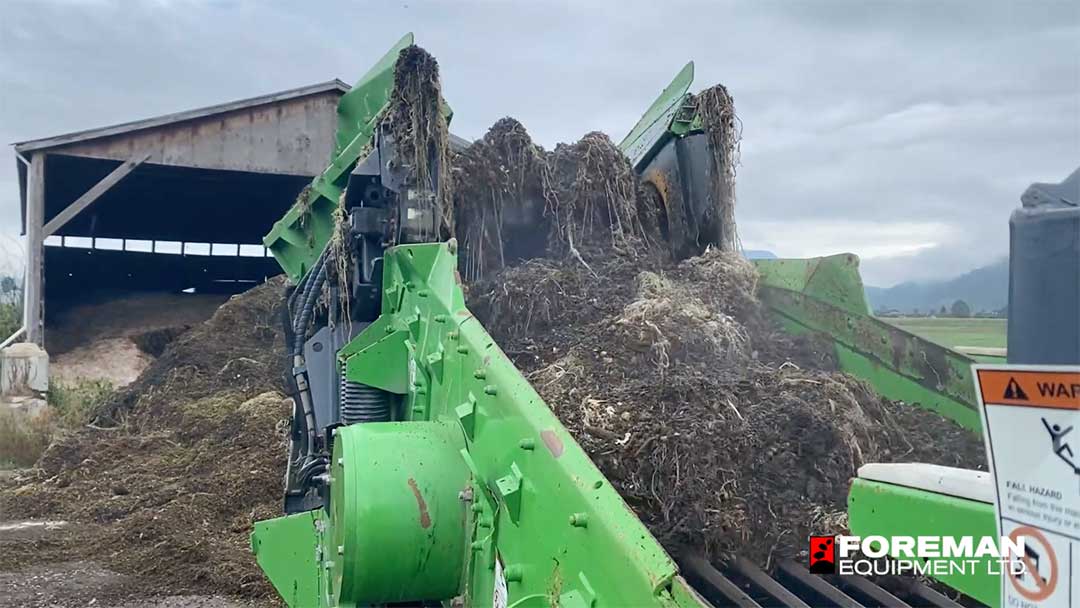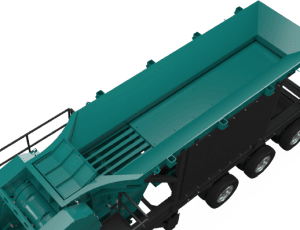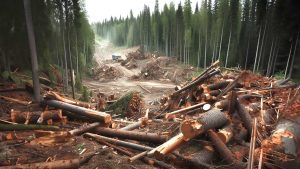
Unlocking Operational Excellence: The Essential Guide to Scalping Screens
Ever wondered what ‘scalping’ means? It’s all about kicking out the unwanted stuff right at the start, so the good material is ready for its best use.
Think of Scalping Screens as the Swiss Army Knife of Screening
When it comes to screening jobs, scalping screens are the ultimate multitaskers. Much like a Swiss Army Knife, they’re versatile, tough, and ready to handle whatever comes their way. Whether you’re tackling heavy-duty material or optimizing for efficiency, these screens are built to handle the toughest challenges and keep your operation moving smoothly.
Scalping Screens Optimize Production and Improve Profitability and are indispensable tools with applications across a range of industries, from aggregate and recycling to land clearing and disaster recovery. Their impact on operational efficiency, environmental sustainability, and safety is profound. Getting to know scalping screens is like adding a star player to your team—they boost performance and keep things green and efficient.
As technology advances and market demands shift, scalping screens will grow more essential in material processing and beyond, emphasizing their crucial role in modern industries.
Scalping Screens vs. Traditional Screening Methods
The evolution of screening technology has brought scalping screens to the forefront, especially when compared to traditional screening methods. These advanced machines offer significant advantages, from higher throughput to improved efficiency and accuracy in material separation. Traditional screens can get bogged down with big loads, but scalping screens? They’re built to power through, no sweat.
The contrast between scalping screens and traditional methods is obvious in terms of processing speed and the ability to deal with a variety of materials. Traditional screens, often limited by size and capacity, can slow down operations, leading to bottlenecks and reduced productivity. Scalping screens, on the other hand, are adept at quickly sorting through large quantities of material, ensuring a smooth and continuous flow in the production line.
However, transitioning to scalping screens from traditional methods can be a challenge for some operations. It involves not only financial investment but also changes in operational workflows and employee training. Despite these initial hurdles, the long-term benefits in terms of efficiency, productivity, and cost savings make the transition worthwhile for most businesses.
12 Applications Where Scalping Screens Optimize Production and Improve Profitability
Think of scalping screens as your operation’s first line of defense, tackling tough screening jobs and keeping things running smoothly.. Whether it’s sorting through mountainous piles of aggregate, sifting through recyclables, or clearing land of debris, these robust machines provide the first line of defence against unwanted materials, ensuring that downstream processing operates smoothly.
Available in various designs and configurations, including vibrating screens, grizzly screens, and trommel screens, scalping screens offer versatility in different applications and operating conditions. They can be customized with different screen openings, deck configurations, and drive systems to suit specific processing requirements and material characteristics.
1. Scalping Screens in the Aggregate Industry

Vibrating Grizzly Feeder
The aggregate industry, with its relentless demand for precision and efficiency, finds a perfect ally in scalping screens. These robust machines facilitate the first stage of material separation by effectively removing oversized materials. This is not just about maintaining the integrity of crushing equipment downstream; it’s about enhancing the overall throughput and quality of the final product.
In material separation, the precision and efficiency of scalping screens can significantly impact productivity. By separating larger from smaller materials and removing uncrushable oversized rock and fines, they help ensure that crushers and other equipment receive the correct size of feed. This optimizes the crushing process and reduces unnecessary wear and tear. Preventing oversize rock from entering the crushing chamber prevents rock that is too large to fit in the crusher from becoming stuck and jamming the crusher, which poses a safety hazard. Rock under pressure between two crushing surfaces can explode, and it also must be removed before the crusher can run again. Removing rocks like this can cause a serious safety hazard to anyone working in the area. Real-world applications, from limestone quarries to gravel pits, demonstrate how these screens can lead to more streamlined operations and increased output.
Additionally, the aggregate industry benefits from the versatility of scalping screens that are available in various sizes and configurations, they can be tailored to meet specific operational requirements. This adaptability, combined with their rugged design, makes them particularly suited to the harsh working environments typical of this industry.
Scalping screens are used in the aggregate industry for several purposes:
- Removing Over/Under Sized Material
- Protecting Crushers
- Improving Product Quality
- Increasing Production Capacity
- Enhancing Sorting and Grading
- Facilitating Stockpile Management
- Improving Safety
2. The Role of Scalping Screens in Recycling
In the recycling sector, scalping screens take on a different but equally vital role. As environmental concerns rise and the push toward sustainability grows stronger, the efficiency of recycling processes becomes increasingly crucial. Here, scalping screens step in to enhance material recovery by efficiently separating recyclables from non-recyclable waste.
We cannot overstate the impact on environmental sustainability. By improving the efficiency of material recovery, scalping screens contribute to reducing landfill waste and promoting the reuse of resources. This is a significant step forward in the global effort to create a more sustainable and less wasteful society.
Success stories from various recycling operations provide concrete evidence of the benefits brought by scalping screens. Facilities using these screens see better material recovery, improved quality of recyclables, and less waste going to landfills.
3. Benefits for Land Clearing Projects

In land-clearing projects, efficiency and cost-effectiveness are key. Scalping screens prove invaluable by streamlining operations, allowing for the quick and effective separation of organic matter from soil and debris. This not only speeds up the clearing process but also significantly reduces the volume of material requiring further transportation and processing.
Moreover, the environmental benefits are clear. By enabling more precise separation, scalping screens facilitate the recycling of organic material, which can be repurposed or disposed of more responsibly. This contributes to the overall sustainability of land-clearing projects, aligning with environmental regulations and public expectations for greener practices.
Innovative Uses of Scalping Screens Beyond Traditional Fields
Scalping screens, traditionally associated with the aggregate, recycling, and land-clearing industries, are branching out into new and innovative applications beyond their conventional roles. These versatile machines are finding their place in various sectors, demonstrating their adaptability and potential to improve efficiency and productivity across different fields.
4. Urban Development and Infrastructure Expansion
As urban areas continue to expand and infrastructure needs grow, scalping screens are playing a crucial role in city development projects. In the preparation of construction sites, they efficiently separate materials for reuse and recycling. This not only contributes to sustainable construction practices but also reduces the cost and environmental impact of urban development projects.
5. Agriculture and Soil Preparation
The agricultural sector uses scalping screens for soil preparation and conditioning. They help separate rocks, debris, and other unwanted materials from soil, ensuring the land is ready for planting. This use of scalping screens can significantly enhance soil quality, increase crop yields, and improve the overall efficiency of agricultural operations.
6. Waste Management and Composting
The waste management and recycling industry is finding innovative ways to use scalping screens in composting and organic waste processing. By separating organic material from non-compostable waste, these screens can enhance the efficiency of composting facilities and contribute to more sustainable waste management practices. This not only helps in reducing landfill waste but also produces high-quality compost for agricultural and landscaping use.
7. Mining and Mineral Processing
While scalping screens are already used in mining, their application in smaller, more specialized mining operations is expanding. They are being adapted for use in the processing of rare minerals and metals, where precision and efficiency are critical. This innovative application is helping to optimize the extraction and processing of valuable resources, contributing to the sustainability and profitability of mining operations.
8. Plastic and Glass Recycling
In the recycling sector, scalping screens are finding new applications in the separation of plastics and glass. By efficiently sorting these materials, they contribute to more effective recycling processes and reduce contamination rates. By ensuring that materials are repurposed and reused
This results in higher-quality recycled materials and supports the circular economy by ensuring effective reuse and repurposing of materials.
9. Biomass Production and Energy Generation
The energy sector uses scalping screens in biomass production and energy generation processes. By separating usable biomass from waste, these screens facilitate the production of renewable energy sources, such as biofuels and wood pellets. This innovative application supports the transition to greener energy solutions and helps in reducing reliance on fossil fuels.
10. Aquaculture and Marine Debris Removal
In the aquaculture industry, scalping screens clean and prepare water bodies by removing debris and harmful materials that can impact marine life.
Additionally, they are instrumental in efforts to remove marine debris from oceans and waterways, contributing to environmental conservation and the health of marine ecosystems.
11. Archaeological Excavations and Historical Preservation
An unconventional but highly beneficial use of scalping screens is in archaeological excavations and historical preservation projects. They are used to sift through soil and debris, aiding in the discovery and preservation of historical artifacts. This application demonstrates the versatility of scalping screens and their potential to contribute to cultural and historical research.
12. Scalping Screens in Disaster Relief and Recovery
In the context of disaster relief and recovery, scalping screens play a crucial role in clearing debris and recycling materials. They can be rapidly deployed to affected areas, helping to clear and process rubble, thereby facilitating faster and more efficient recovery efforts.
Demonstrated Versatility Beyond Traditional Applications
The use of scalping screens in these scenarios demonstrates their versatility and importance beyond traditional industrial applications. By contributing to cleanup operations and rebuilding efforts, scalping screens demonstrate their value in critical situations, highlighting their adaptability and utility in various contexts.
Ready to see how scalping screens can step up your game?
Let’s chat about finding the perfect fit for your needs!
Explore our range of high-performance scalping screens on our product page. See how our technology can help streamline your processes and improve sustainability.
